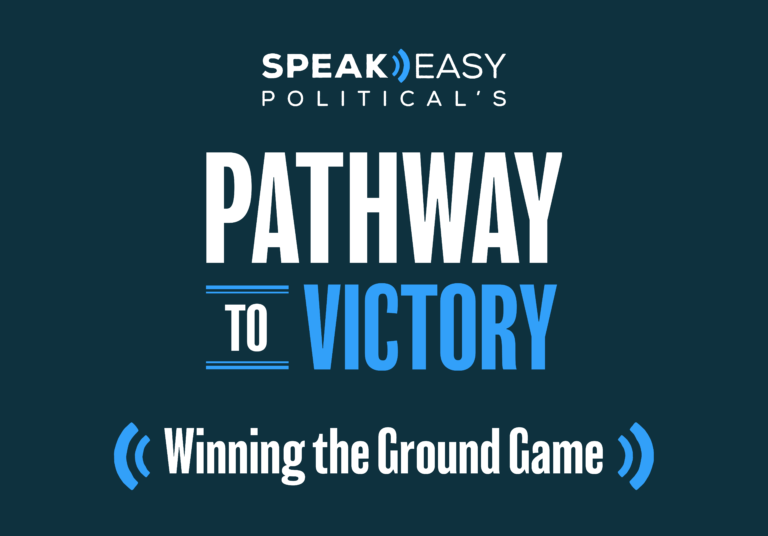Get voter lists to start your walk and phone program.
Okay — this is really important. You need to stop and think about where you can find the best data available to you. Almost every local election office will give or sell to you at a minimal cost a list of every registered voter. If this is the only option, it will have to work.
But if you can invest in only one professional service, we recommend that you get a professional voter data firm to provide you with lists (and many have other tools you can use). If you are a progressive Democrat, the Voter Activation Network (or simply VAN as it is called) is a great choice. Other candidates can use L2 Data, which provides voter registration data tied in with commercial data. If you have decided to use a website-building service like Nation Builder, it has lists as well. Candidates running for office in California frequently use a firm called Political Data Inc. (PDI).
Good data is important for many reasons. These vendors will help you segment who is likely to vote in your election. If you are going into a race with a likely 50% turnout, predicting correctly who those voters will be makes you up to twice as efficient!
Target your efforts.
Big campaigns spend a lot of time on targeting — choosing which voters to communicate with — and you will hear a lot about this if you are talking to consultants. This usually means two things — a way to identify voters who are likely to say yes and a way to eliminate voters who will likely say no. Sadly, our society is now so partisan that Republicans almost never vote for Democrats and vice-versa, so a Democratic campaign is likely to target soft Democratic supporters and Independent voters and essentially eliminate Republican voters from campaign efforts. Targeting also involves identifying voters by issue interest. So, for example, senior voters might hear about Medicare, very young voters about college affordability and 30- to 40-something voters about schools or child care.
Your race might not be so complicated — but here are some targeting efforts you should think about:
- First, target those voters who are going to vote, not those voters who never vote. There is some wiggle room here — but if a voter has skipped the last four elections, leave them out. They are unlikely to vote in the next election (most data vendors have good tools to predict who is and who is not going to vote).
- Second, try to target in a way that works from your anticipated base outward. So walk your own precinct first, then areas around it. One of the key reasons for this is that as you walk, you want to be identifying supporters as well as recruiting volunteers. You will recruit more volunteers from your base than from the public at large.
- If you have a clearly anticipated supporter base—for example any cultural, ethnic, or geographical group you belong to—contact all these voters early (by phone, precinct walking, etc.). It will help you build up your support list and recruit volunteers.
Create your walk piece.
In many ways, you have already done this. You have created a 250-word summary of your candidacy and you have taken some great pictures. You need to edit this down to about 125 words now for a typical walk piece. If you have gotten some key endorsements, add the top three. SpeakEasy has professionally designed walk card templates on our site which will make creating your walk card a lot easier!
Typically on one side of your walk piece you will show your head shot and some key and easy-to-read “bullets” summarizing you and your race. Keep it short “Smith is a teacher supported by parents and teachers!” On the reverse side try to use an action shot of you with people. You can have slightly more text here. Always tell people how to join your campaign with your website or email address or both. Remember — you have to say who paid for this piece — that’s what the disclaimer is for — and most jurisdictions even call out how big your disclaimer needs to be. So don’t forget compliance.
What does a good “walk” program look like?
First, make sure you have good lists. It almost always makes sense to target “likely voters,” not “all voters.” Almost every data vendor (like NGP/VAN, for example) has a program you can use to tabulate responses on your phone. You should take advantage of these services. The data will be “walk-sorted,” meaning it lets you hit all the likely voters on one side of the street before you go to the other side.
Most candidates do best when they walk with a partner. The partner, if they find a voter who wants to meet you, would then text you — “Head over to 122 Cherry Lane — the voter wants to talk with you.” Try and start with friendlier territory, like your own precinct, when you get going. Carry literature (like your walk card) you can leave behind if a voter is not home or if they want to learn more about you.
If a voter says he or she supports you, ask for an email address so you can stay in touch. If the voter says he or she is undecided, ask for an email address so you can email more information. Don’t forget to say thank you via email to everyone who says yes and email the information to everyone who asks for it. Stay positive — you might have some doors slammed in your face. But that’s normal.
PRO TIP: Many campaign data tracking programs offer tools that will help you keep track of who you talk with during your precinct walks and what they say back to you. These tend to be programs or apps you can have with you on your cell phone or mobile devices. They take some training — but they will make your precinct walking and call times much more efficient.
Looking for more information about what it takes to run for office? Download our e-book designed to walk candidates through the process of running – and winning – their first political campaign. And be sure to check out more from our Pathway to Victory series!




